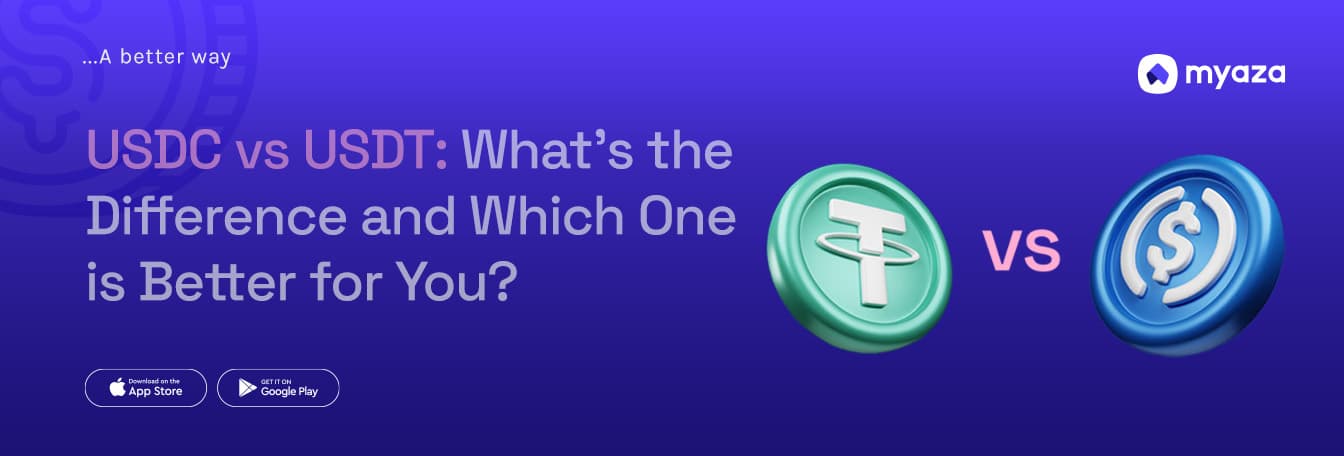USDC vs USDT: What’s the Difference and Which One is Better for You?

The world of stablecoins can be confusing, especially if you’re trying to figure out which one to use. If you’ve ever wondered about the difference between USDC and USDT, you’re not alone. Both are pegged to the US dollar, both are widely used, and both serve as crucial tools for digital transactions. But what sets them apart? And more importantly, which one should you use? Let’s break it all down.
Understanding Stablecoins
Before diving into the differences, let’s quickly go over what stablecoins are. Unlike cryptocurrencies like Bitcoin or Ethereum, which are known for their price volatility, stablecoins are digital assets designed to maintain a stable value by being pegged to a real-world asset—in this case, the US dollar. This makes them an excellent choice for people looking to store value, send money, or make transactions without worrying about price fluctuations.
What is USDT (Tether)?
USDT, or Tether, is one of the oldest and most popular stablecoins in the market. Launched in 2014, it has become the go-to choice for traders, businesses, and crypto users worldwide. Tether claims that each USDT is backed by an equivalent amount of reserves, including cash, cash equivalents, and other assets. However, Tether’s transparency has been questioned over the years, with concerns about whether all issued USDT are fully backed.
Despite these controversies, USDT remains the most widely used stablecoin, primarily because of its high liquidity. Many cryptocurrency exchanges, payment processors, and traders prefer USDT due to its broad adoption and availability on multiple blockchain networks, including Ethereum (ERC-20), Tron (TRC-20), Binance Smart Chain (BEP-20), and others.
What is USDC (USD Coin)?
USDC, on the other hand, is a stablecoin issued by Circle and Coinbase under the Centre Consortium. Unlike USDT, USDC is known for its transparency, as it undergoes regular audits to verify that every coin in circulation is backed 1:1 by cash or short-term US Treasury bonds. This gives users greater confidence in the stability and security of USDC compared to USDT.
USDC is also widely used across multiple blockchain networks, including Ethereum, Solana, Polygon, and Avalanche. It is often the preferred stablecoin for businesses and institutions looking for a fully regulated and transparent option.
Key Differences Between USDC and USDT
Transparency and Regulation: USDC is subject to more rigorous regulatory oversight and undergoes frequent audits, whereas USDT has faced criticism for a lack of transparency in its reserves.
Liquidity and Adoption: USDT has a higher trading volume and is more widely used across exchanges and DeFi platforms, making it the more liquid option.
Security and Trust: USDC is considered safer due to its regulatory compliance and verified reserves, making it a preferred choice for businesses and investors who prioritize security.
Blockchain Availability: Both stablecoins are available on multiple networks, but USDT has broader adoption in DeFi applications and exchanges.
Use Cases: If you need a stablecoin primarily for trading and liquidity, USDT might be the better option. However, if transparency and security are your top concerns, USDC is the way to go.
How to Receive USDC and USDT in Your Myaza Wallet
Regardless of which stablecoin you prefer, Myaza makes it easy to receive and use both USDC and USDT. With Myaza, you can receive payments in either stablecoin from anywhere in the world and swap them into Naira or other supported currencies effortlessly.
Simply open your Myaza app, go to ‘Fund Wallet,’ and choose your preferred stablecoin—USDC or USDT. Myaza supports multiple blockchain networks, including Ethereum, Binance Smart Chain, Solana, and more, ensuring you can transact quickly and securely.
The Verdict: Which One Should You Use?
Both USDC and USDT have their strengths and weaknesses. If you prioritize liquidity and broad adoption, USDT is a solid choice. But if you value transparency, security, and regulatory compliance, USDC is the better option. The good news? With Myaza, you don’t have to choose—you can use both, receive payments effortlessly, and convert between them whenever you need.
So, whether you’re a business owner, freelancer, or everyday user looking for a stable way to store and send money, Myaza has got you covered. Sign up today, get your Myaza wallet, and start receiving USDC and USDT seamlessly!


